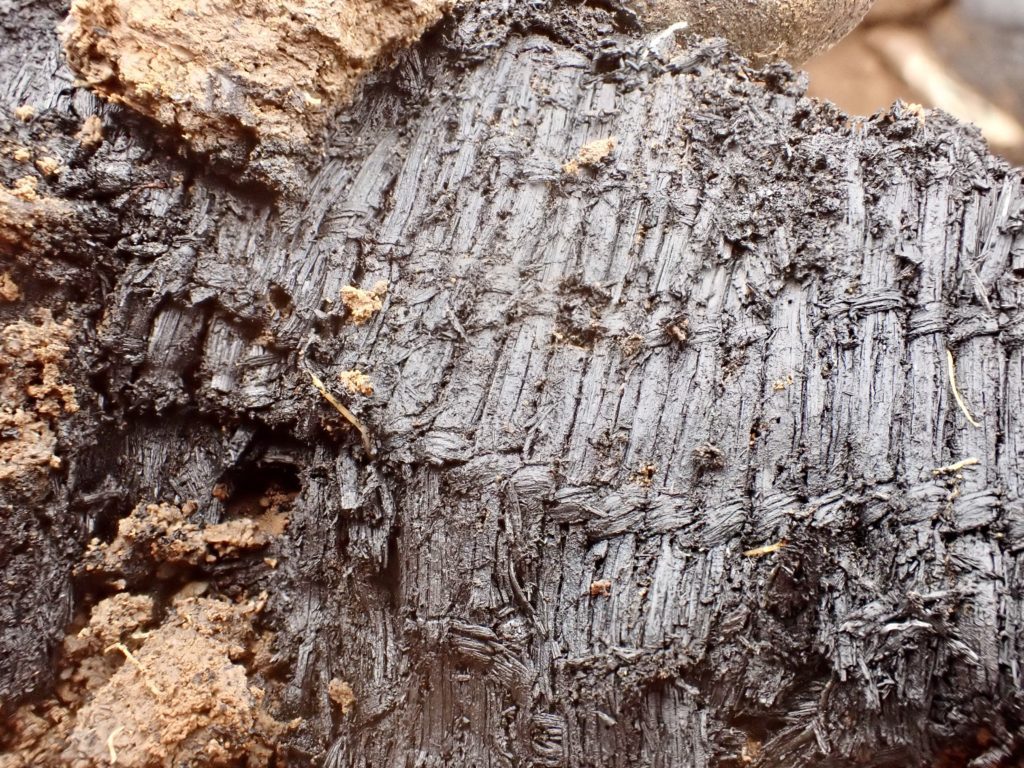
Archaeologists with Kodiak’s Alutiiq Museum and Archaeological Repository have recovered woven artifacts that are an estimated 3,000 years old.
The rare finds were discovered at an ancestral Alutiiq sod house settlement on the shore of Karluk Lake on Kodiak on Aug. 18. While excavating the house, archaeologists found the uniquely preserved woven fragments — which are said to be the oldest well-documented examples of Kodiak Alutiiq/Sugpiaq weaving.
While weaving is a long-practiced Alutiiq/Sugpiaq tradition, it is difficult to document archaeologically. Since fiber artifacts are so fragile, they are rarely preserved.
In the announcement, Patrick Saltonstall — the Alutiiq Museum curator of archaeology — said the team was excavating at the house for part of a study about how the Alutiiq people used Kodiak’s interior when they found the grass mats.
“When we reached the floor, we discovered that the house had burned and collapsed,” Saltonstall said. “The walls of the structure, which were lined with wood, fell into the building and covered a portion of the floor. This sealed the floor quickly and limited burning.”
Saltonstall said the discovery came as a shock.
“As we removed the remains of the walls, we were surprised and excited to find fragments of charred weaving,” he said. “It looks like the house had grass mats on the floor. The pieces covered about a two-meter area at the back of the house, perhaps in an area for sleeping.”

The museum’s collections have grass and spruce root baskets that are around 600 years old, but have nothing as old as these mats. Inspection of the woven fragments show that the weavers made them by laying down long parallel strands of grass and securing them with perpendicular rows of twining about an inch apart. The technique created an open weave that has been found in other, historic examples of Alutiiq grass weaving.
The sod house the artifacts were found in has been radiocarbon dated to about 3,000 years old.
“It is likely that our ancestors worked with plant fibers for millennia, from the time they arrived on Kodiak 7,500 years ago,” said April Laktonen Counceller, the museum’s executive director, in the announcement. “It makes sense. Plants are abundant and easily harvested, and they are excellent materials for making containers, mats, and other useful items. It’s just very hard to document this practice. This wonderful find extends our knowledge of Alutiiq weaving back an additional 2,400 years.”
The field crew of archaeologists transported the fragile fragments in a specially-made transport box back to the museum’s laboratory. They will be preserved and documented on loan from the regional Alaska Native Corporation for Kodiak Alutiiq people and the sponsor of the archaeologists’ research, Koniag. Koniag owns the land the excavation took place on, and has been supporting the archaeological excavations and studies in the area.
“Discoveries like these highlight our Alutiiq people’s innovation and resilience,” said Koniag President Shauna Hegna.





